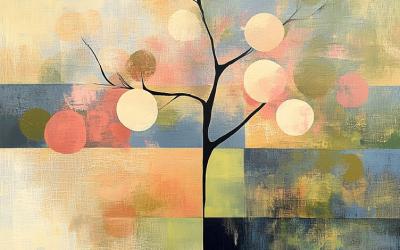Resources by Emily R. Brink

Rejoice! A Collection of Psalms, Hymns, and Spiritual Songs
Sydney: The Presbyterian Church of Australia, 1987. Available from the PCA, G.P.O. Box 100, Sydney 2001

The night we all went caroling.
It's the second Sunday of Advent. Just before the morning benediction the pastor reminds us to dress warmly for the evening service, which is going to be held mostly outside. Outside it is 27 degrees Farenheit and snowing. But from experience we know that we will have a bigger crowd than usual this Sunday evening.

Hymn suggestions involving children
The "Hymn of the Month" for Reformed Worship 11 included selections for April, May, and June; with this issue we begin with September, skipping July and August. We are adjusting our schedule to give worship leaders more lead time for planning and to bring hymns of the month in line seasonally with other resources in this and future issues.

Every Sunday about three hundred Christians gather to worship at Christ Church (PCA) in Grand Rapids, Michigan. Many of them grew up in other Protestant and evangelical traditions. They bring these backgrounds and ex periences with them, enabling the congregation to draw from the breadth and depth of the Christian tradition as they worship.
Worship is at the heart of Christ Church. The congregation was founded on and centered around the concept of worship and takes seriously its goal to involve all members in contributing to Sunday services.

Models for Paying Church Musicians
We knew we were on to a subject of intense interest when we conducted a survey on payment of church musicians. So we weren't surprised when the responses poured in after we printed the results of that survey in RW 9. Many respondents offered helpful perspectives and suggestions, some of which appeared in RW 10 (also see p. 46).

. Paul Westermeyer. New York: Harper & Row, 1988,128 pp., $14.95.

October
I Am the Lord Your God
The story of a hymn usually begins with a text, but this one starts with a tune. A little over 150 years ago, Nicholas I, Czar of Russia, ordered Alexis Lvov to compose a national hymn tune. For years Russians had been singing a Russian text to the English melody for "God Save Our Gracious King." Nicholas thought it was time his people had their own hymn. Lvov responded by composing the melody we now know as RUSSIA, or RUSSIAN HYMN.

Consider the Bathroom: an (Im)Modest Proposal for Church Architecture
The first time I walked into a church and found two French Provincial pink and blue stuffed chairs near the pulpit, I thought they had been brought in for a drama of some sort. I was participating in a worship conference and had arrived early to check out the piano, organ, and sound system. I assumed someone would remove the chairs after the drama section of the program.

July
Psalm 34: Lord, I Bring My Songs to You
Psalm 34 is one of those psalms that the Bible explains in a fascinating heading: "When he [David] pretended to be insane before Abimelech, who drove him away, and he left." The psalm, constructed as an acrostic in Hebrew, is a prayer of thanksgiving for deliverance, followed by an invitation to others to join in the praise (st. 1-2). From praise, the psalm moves to instruction in godly living (st. 3—6).
